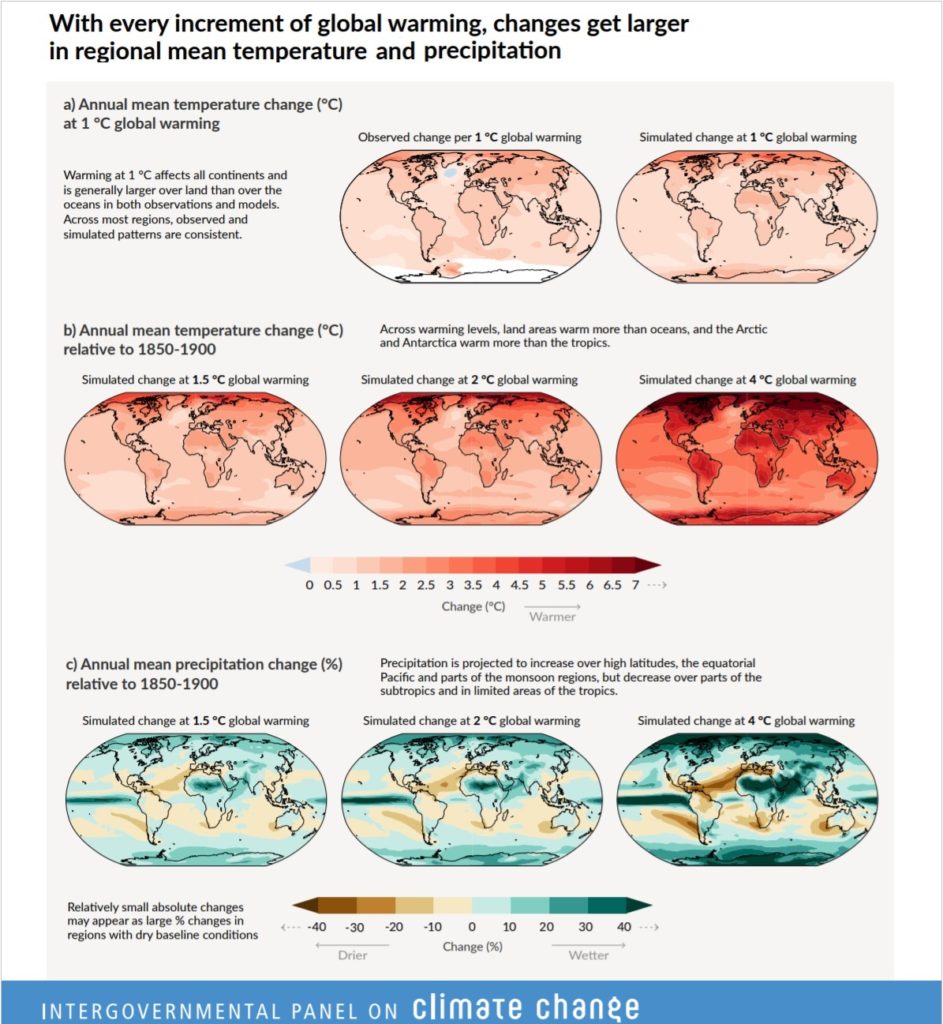IPCC Report: The climate crisis is here, and humans are a major reason why

On August 6, 2021, the Intergovernmental Panel on Climate Change (IPCC) released its Sixth Assessment Report, the sixth such report issued since 1988.
The IPCC report is a review of scientific literature, government data and reports, and other credible material on climate change from around the world. And for the first time, the IPCC report concluded that humans are unequivocally playing a role in climate change and the impacts happening today.
Climate change is here, it’s happening, and humans are responsible, and Alaska is a textbook example of that reality here in the United States — it’s the state that is experiencing both the most rapid warming, yet it’s economy also relies heavily on fossil fuels, the very thing that is stoking this dramatic global change.
Scientists and other environmental professionals have understood for a while now that the Arctic is the fastest-warming region of the globe, warming as much as three times the global average. Since the middle of the twentieth century, the average annual air temperature has increased by at least 3°F in Alaska, and Alaskans have already started to see the effects of this warming through earlier spring snowmelt, widespread glacier retreat, more frequent insect outbreaks and increased wildfires. Ironically, although precipitation is expected to increase in Alaska, on average our landscapes will become drier as warmer temperatures and longer growing seasons increase evaporation.
From 2011 to 2020, the annual average Arctic sea ice coverage reached its lowest level since at least 1850. Under the most optimistic scenario in the IPCC report (1.5°C of warming), summertime sea ice in the Arctic Ocean will vanish entirely at least once by 2050. Arctic sea ice levels usually fluctuate throughout the year, but the average summer lows have decreased since the 1970s, and today they are at their lowest levels in a thousand years.

Also under the most optimistic scenario, sea levels will likely still rise 6–10 feet on average, which will impact many Alaskan coastal communities that are already suffering from increased storm surges and melting permafrost. Coastal communities throughout Alaska will be forced to relocate, a costly process that is further complicated by land ownership constraints. As of 2019, more than 30 villages were either already in the process of relocating or in need of doing so, and a report from the General Accounting Office pegged the cost of relocating just seven of those communities at between $80 to $200 million per community.

Melting permafrost and rising sea levels will also impact existing oil and gas infrastructure, and recent fossil fuel project proposals have even included plans to install “chillers” to keep the ground frozen enough to support the structures needed for continued extraction. And it’s not just the oil and gas industry — infrastructure throughout the state, including roads and buildings, are and will continue to be affected by melting permafrost. And it’s happening faster than previously thought.
While scientists have understood this climate chaos would dramatically impact the Arctic for a while now, this latest IPCC report makes it abundantly clear that climate change has already begun to affect our state, and will continue to impact humans, wildlife and the landscapes we love into the future. Addressing it will require rethinking the way we do a lot of things, from how we heat our homes to what we eat and how we travel. The good news is that as a human-created problem, we humans already have the tools we need to start to fix it.

Further reading:
Read the full report or explore the IPCC interactive atlas of data.
“Fourth National Climate Assessment, Chapter 26: Alaska,” U.S. Global Change Research Program (November 2018)
“When Climate Change Comes to Your Doorstep,” The New York Times (August 31, 2021)
“Helping Alaskan Communities Facing Climate Risks,” Eos (February 7, 2020)
“Statewide Threat Assessment: Identification of Threats from Erosion, Flooding, and Thawing Permafrost in Remote Alaska Communities,” Prepared by: University of Alaska Fairbanks Institute of Northern Engineering, U.S. Army Corps of Engineers Alaska District, U.S. Army Corps of Engineers Cold Regions Research and Engineering Laboratory (November 2019)
“Fighting the Rising Tide in Shaktoolik, Alaska,” National Trust for Historic Preservation (April 10, 2017)
“Climate Change: Realities of Relocation for Alaska Native Villages,” Northern Arizona University (April 2011)
